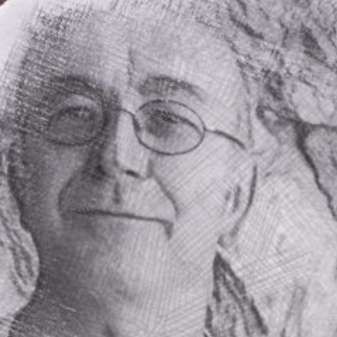There's more to music than timing, and there's more to timing than music. Timing – as it affects programming – can be a powerful thing. Context amplifies compositions; anniversaries add resonance; personal connections contribute to emotional effect – such as in this concert, RSNO conductor Stéphane Denève's au revoir to Edinburgh. He has built a rapport with Usher Hall audiences, which could be felt in the response to his pre-concert greetings. Humorously informative (like the infectiously enthusiastic pre-concert talks of William Chandler, Associate Leader of RSNO), these talks appear to elicit a sense of shared ownership of the event.
Prélude à l'après-midi d'un faune (1894) isn't a work I was desperate to hear. However, there seemed to be something fitting about Denève ending his 'auld alliance' with such a work in Debussy's 150th anniversary year. Moreover, it's all too easy to forget that live music in a great venue effortlessly trumps the best hi-fi, and the sound was simply gorgeous. Principal flautist Katherine Bryan must take much of the credit for this. There was no hint of the pressure which you'd imagine in a lone musician opening this high-stakes concert (which also went out live on Radio 3). The timeless mood of Mallarmé's poem was captured and sustained throughout. Orchestral balance and colour were impressive too in this timbral chameleon. As much a break with tradition as The Rite of Spring, its première resulted in an encore rather than a riot.
Problems of initial acceptability seemed a common thread in this programme. Barber's Violin Concerto (1939) was criticised by its intended player, Iso Briselli, as being too easy – until he saw the final movement, when he deemed it unplayable. Barber found a replacement soloist and the work was duly premièred. The vindicated Barber received the balance of the agreed fee. William Chandler mentioned in the pre-concert talk that the orchestral string players share material with the soloist in the challenging finale. Tempo and trepidation are never far apart. The movement took off at a fiendish speed. Canadian soloist James Ehnes is clearly a demonic player, when required. Full marks to the RSNO string players for matching this. However, there is more to a concerto than virtuosity. Ehnes’ celebrated lyricism was apparent from the opening phrase of this beautiful work.
Called back for two encores, Ehnes chose not to rest on his laurels, but instead offered two of Paganini's famous Carprices: no. 24 and then no. 16. Even these showpiece works were tenderly shaped. Such phrasing under fire always seems the mark of great musician.
Ehnes and Denève had also performed the concerto in 2010, in celebration of Barber's 100th anniversary, together with the Philadelphia Orchestra, who had given the work its official première. And we were only one year short of another centenary: that of possibly the most incendiary première in history, Stravinsky's The Rite of Spring in 1913. Choreography and general noise level aside, could it have been rhythm which caused the upset which Debussy avoided? One can't really accuse the work of lacking melody – there are many tunes which would pass 'the old grey whistle test'. There are undeniable tonal centres. This is a work I would urge anyone to experience live, as the eyes aid the ears in perceiving – and making sense of – the many layers and cross-rhythms. This really struck me when noticing the young, solipsistically heroic bass drum player in 'Games of the Rival Tribes'. His beats were at unhelpful variance with their surroundings. However, one could see that he was maintaining a uniform pulse – albeit it every three beats as opposed to the overall pulse of the moment in fours – and that the apparent randomness was purely contextual. Watching a muted DVD of this moment, you'd never guess how unsettled it all feels. Or again, seeing one of the two timpani players hurriedly damping four drums, you see and feel the effect of the notes' end as much as their beginning. Similar audio aids come in the form of the violins' slashing bows or the trombones’ stabbing, dragging slides.
Hats off to principal bassoonist David Hubbard for his steely nerve in the stratospheric opening solo. Many other soloists and sections enjoyed recognition for their contributions, and rightly so. However, my feeling is that this one of orchestral music's best examples of teamwork. William Chandler had earlier described how the Rite not only produces but requires adrenaline. An orchestra surely can't help but bond after a successful encounter with this 99-year-old giant. This close bond is surely what Denève will miss. I'm sure all RSNO fans will wish him well in his new post of Chief Conductor of the Stuttgart Radio Symphony Orchestra. Responsible for 'incredible audience growth', Denève received a very affectionate send-off.


